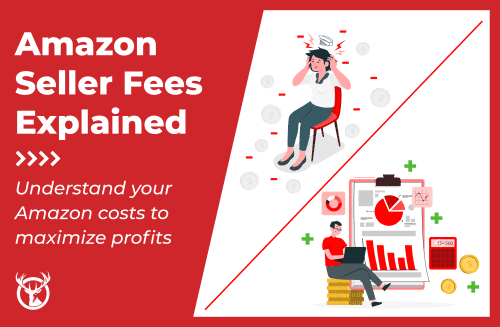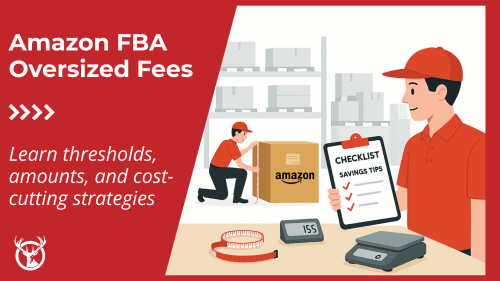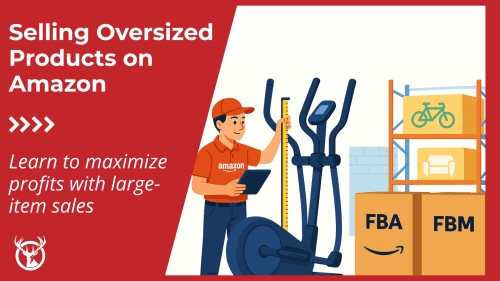Amazon accounts for nearly 40% of online retail in the U.S., and 57% of Amazon Marketplace sales are by third-party vendors. So, whether you’re an established brand or a scrappy entrepreneur, Amazon is an important place to connect with eCommerce shoppers. And that means it is time to learn how to sell on Amazon.
Being a new seller on Amazon can be intimidating, especially for small businesses, so we’ve created a step-by-step beginner’s guide to help you start selling on Amazon, create product listings that sell, set up eCommerce fulfillment, and build a profitable Amazon business.
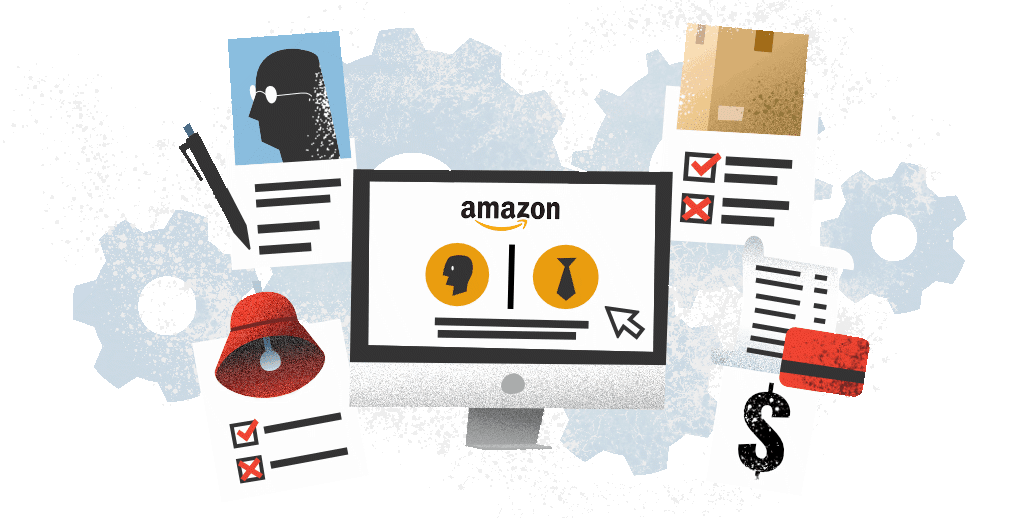
Get started selling on Amazon
To start selling on Amazon, you need to set up a profile, create product listings, and find an eCommerce fulfillment company or dropshipping provider. This guide walks you through the basics of the process. Amazon Seller Central is a terrific resource that can answer specific questions not addressed here.
What to expect when you sell on Amazon
To start selling on Amazon, there is a four-step process.
- List your product
- Make a sale
- Ship the order to the customer
- Get paid
Of course, each of these steps includes many sub-steps. Though there is a learning curve, once you understand the process, selling on one of the biggest online marketplaces in the world can be easy and fun.
Download the Amazon Seller App
With the Amazon Seller App for Apple or Android, you can calculate the profit you will make on an item whether you’ve set up your account yet or not. If you are already set up to sell on Amazon, the app lets you see the selling price and fees associated with any product on their website.
The app allows you to use the camera on your cell phone to scan a product’s barcode. It will show you the pricing and fee information for the scanned product. The Amazon app is popular among people who do retail arbitrage: buying low-priced items at retail and then reselling them on Amazon.
Use the Fulfillment by Amazon (FBA) revenue calculator
If you haven’t set up a seller account yet, you can use the FBA Revenue Calculator to get the fee details on any item.
Simply search for the item you’re considering selling on Amazon and enter the price, how much it will cost you to ship to Amazon, and how much the product costs you. At the bottom, the calculator will display the amount you can expect to receive as profit after all the expenses are taken out, including the $39.99 per month Professional Plan fees.

Getting set up to sell on Amazon
Now that you’ve taken the preliminary steps to set up your business, it’s time to set up your Amazon Seller account.
Choose a seller category
Choose an Amazon seller category based on the size of your business. You can change your Amazon seller category later if your business grows (or shrinks).
Sell as an Individual
Amazon’s Individual plan is an excellent option if you’re a first-time seller or plan to ship fewer than 40 items per month. Amazon charges $0.99 for each item you sell with the individual plan, but there’s no monthly fee. If you ship at least 40 products, the Professional plan will cost the same or be cheaper.
Sell as a Professional
The Amazon seller Professional plan costs $39.99 a month with no per-item fee. The Professional seller level comes with a number of perks you don’t get on the Individual plan, including reporting, bulk inventory data uploads, and eligibility for Featured Item listing. In addition, Professional plan members can set their own shipping rates, while Individual sellers are forced to charge shipping costs set by Amazon.
Amazon takes a cut of each sale no matter which selling plan you sign up for, so factor that percentage when you calculate the cost to sell and your profit margins.
Set up your profile
You can complete Amazon’s registration process in under an hour if you have all the information you need before you get started. Here’s what Amazon needs to know:
- Your legal business name, address, and contact information
- The email address for your Amazon business (should be set up before starting the process)
- An internationally chargeable credit card with a valid billing address
- A phone number where you can be reached during the registration process
- Tax information such as your Social Security number or your company’s Federal Tax ID number
Once you enter this basic business information, you’re registered and ready to sell on Amazon.
Manage your seller settings
After you register, it’s time to customize your seller account settings. In the top right corner of the Seller Central home page, click “Settings” to find your login settings, as well as several others that you will want to configure.
Account information
Verify that all of your contact information is correct and enter a display name if you choose not to use your legal name. You should also double-check your return information to ensure that your returns process is entered into the system and Amazon knows how you want to handle returns.
Notification preferences
Choose which emails you’d like to receive from Amazon, including reports, recommendations, and news or changes to your listing. Make sure the “Listing Notifications” and the “Report Notifications” are turned on because these communications from Amazon contain critical information you’ll need to run an online business on Amazon.
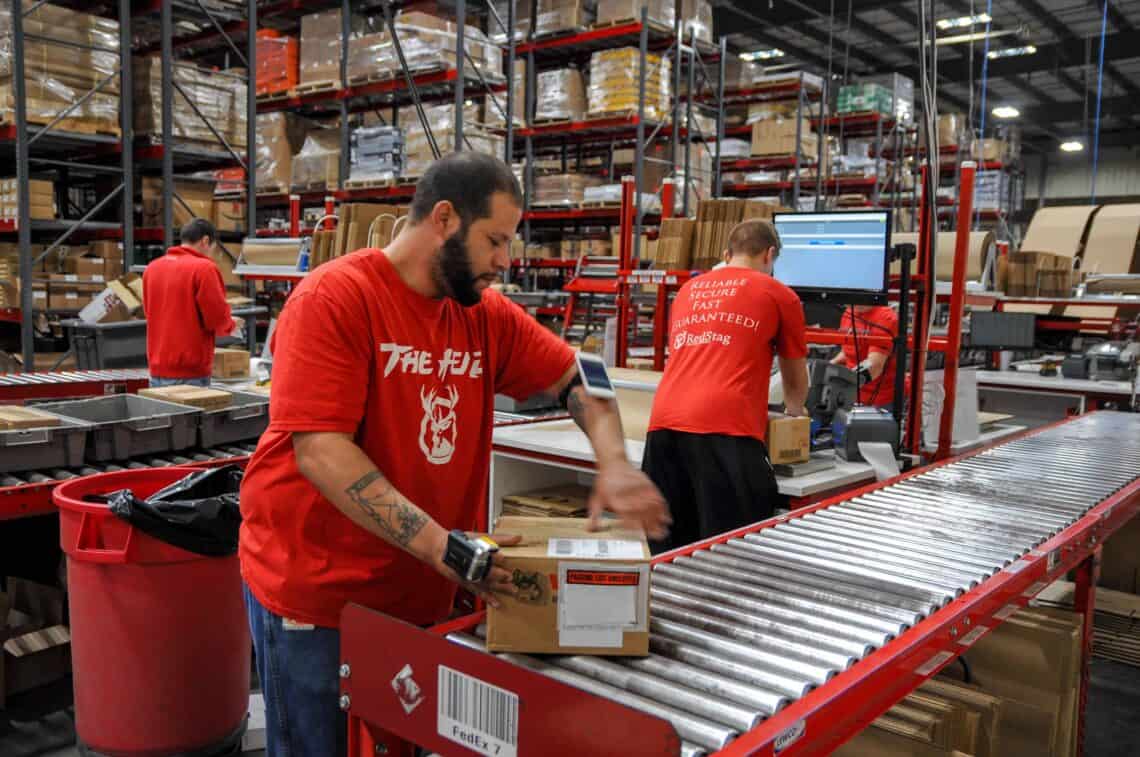
Shipping charges
If you choose the Professional seller plan, you can set your own shipping rates for self-fulfillment. On the other hand, if you’re working with a third-party eCommerce fulfillment company, its pricing structure and shipping times will dictate your shipping settings.
Keep in mind that the faster and cheaper your orders can be delivered, the more likely customers are to choose your item.
Personal information
The “About Seller” information gives customers a sense of what your Amazon business is all about. Provide an overview of what your company sells and let your brand personality shine through, but keep it short. You should also upload your company logo here.
If you’re not sure what to write, look at other “About Seller” sections for inspiration.
Connect your bank account to your Amazon store
Amazon will pay you bi-weekly, and the Statement View in your Payments Report shows you when and how much you will get paid. Transfers to your bank can take three to five business days to complete.
You can find payment information in your Amazon Seller dashboard (more on this later). The information is updated automatically so that it always shows up on the payment report.
If you do your own fulfillment rather than using Amazon FBA, Amazon will hold your money in case of returns. Keeping your account in good standing and up to date is the best way to avoid delays in payment.
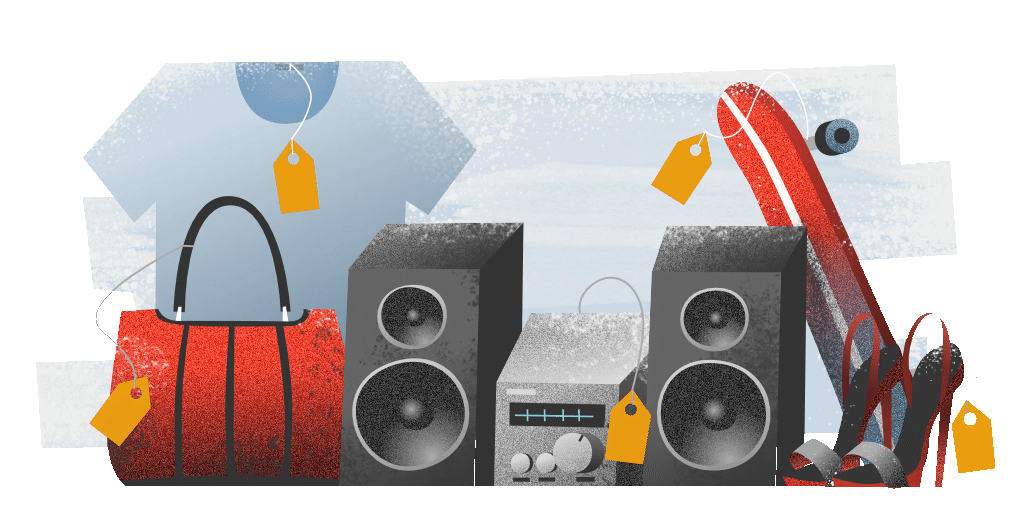
Listing products on Amazon
After you finish setting up your profile, Amazon will prompt you to set up your product detail pages. To set up your first product detail page, visit the inventory tab of Seller Central and choose “Add an Item.” Then create a new detail page or search Amazon’s catalog for already-entered information about the item.
For unique items that aren’t in the system yet, use the “Create a New Product” tool. This page requires more information than if the item were already in Amazon’s catalog; the extra steps ensure a complete product listing for buyers.
For new products, fill in the manufacturer, item name, and UPC code. The system will also generate an FNSKU, and you need to enter that. The FNSKU number is Amazon’s internal inventory tracking code that ensures you get paid for your sales. If you have your own product SKU, you can also enter that. Amazon will also automatically assign each new product an ASIN (except for books — those use the ISBN instead).
Order UPCs
Amazon requires each product to have a Universal Product Code to be listed. Some products come from the manufacturer with a UPC, but in other cases, you’ll need to obtain one from a third-party seller like BarCodes Talk.
Each product has a unique barcode. You may also want to set SKU numbers for your products to help you keep better track of them, but Amazon doesn’t require them.
UPCs also help your fulfillment center keep track of orders and prevent mistakes.

Photograph your products
Product photography doesn’t have to be complicated. With a few tips and best practices, you can create professional-looking product images on a low budget. All you need is a backdrop, good lighting, and a decent camera. Your phone camera can probably take a good product photo if used correctly.
To ensure your photos stand out compared with other sellers of the same or similar products, use high-resolution images (at least 1000×1000 pixels) that are well-lit. Choose images that accurately represent your products, and take multiple photos to display all their uses and features.
If you sell private label merchandise rather than manufacturing your own products, your supplier may already have high-quality photos you can use. Another option is to pay a professional to take your product pictures for you. However, if you have multiple listings and update them frequently, professional photography can be costly and time-consuming.
Watch out for restricted categories
Several categories of merchandise require special approval, and others are prohibited altogether. You can view a list of restricted categories on Amazon’s website. It’s best to avoid these when you’re just getting started but, if your business falls squarely into one of the restricted categories, don’t be afraid to apply for approval to sell on Amazon.
Add products in bulk or individually
Listing products individually is easiest when you’re starting out. This will give your buyers a better sense of the information behind each item.
If you have many similar products to sell, you can follow the Amazon template for that type of merchandise and add products in bulk (if you have a Professional plan only). You can get a detailed example of how to do this here.
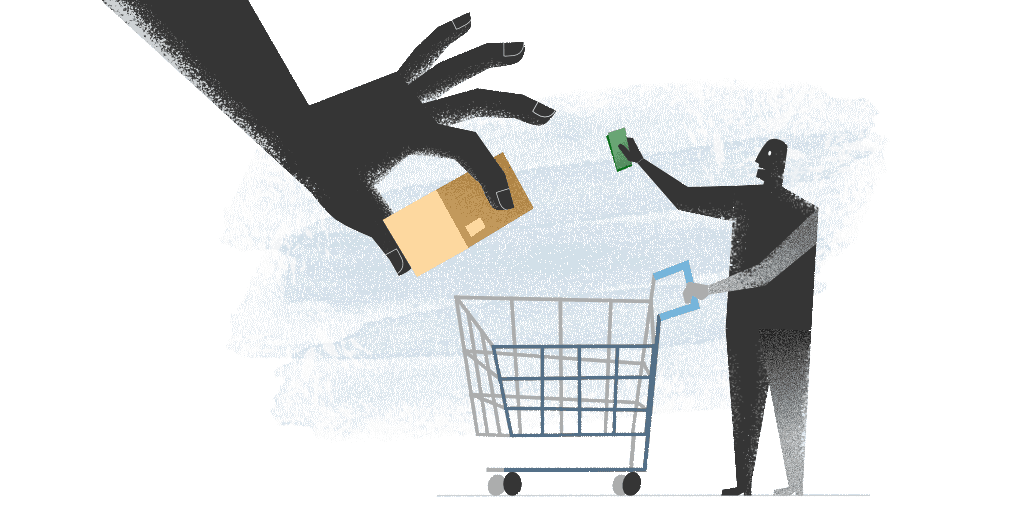
Selling your products online
Once your listings are live on Amazon, it’s time to optimize your product listings and experiment with the many features that can move your goods higher in search results.
Winning the buy box (and how you can lose it)
The buy box is the white box on the right side of the Amazon product detail page that allows customers to easily add items to their carts.
Since there’s no limit to the number of sellers who can sell the same item, there is a lot of competition to get products into the buy box.
Not all sellers are eligible for their products to appear in this coveted spot in Amazon search results; only businesses with excellent seller metrics have a chance at scoring this valuable real estate.
To be eligible for this prized page placement, you will need to have a Professional seller account. People on the Individual seller plan don’t qualify. You will also need to sell new items rather than used ones and have inventory available for sale.
Amazon will choose which seller’s item goes in the prime position by weighing low prices and seller metrics as the marketplace algorithm tries to give customers the best overall deal. If you have great performance metrics, you can afford to price your product higher but if you have mid-range metrics, you will need to offer a more competitive price. Of course, third-party sellers are always at a disadvantage when competing against an Amazon product for the buy box.
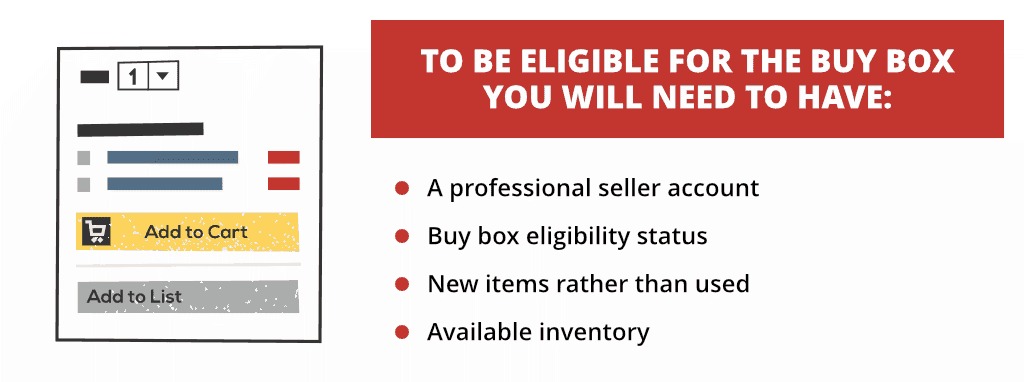
How to win the buy box
If your product is eligible for the buy box, the algorithm looks at four main characteristics:
- Using AmazonFBA: Amazon favors its own fulfillment options.
- Seller-Fulfilled Prime: The Amazon Seller Fulfilled Prime program offers top-performing merchants the opportunity to enjoy the benefits of Amazon Prime while using their own chosen fulfillment company. You must have very strong metrics to apply.
- Landed Price: The landed price is the total cost to buy the product, including shipping. The more competitive the landed price, the more likely it is to end up in the buy box.
- Shipping Time: Amazon favors short delivery times.
Your product can also land on the “Other Sellers” section below the buy box if it meets all the buy box criteria. While this page position is not as prominent, it will still increase your visibility to the consumer.
Advertising on Amazon
You can pay to advertise your listings if you want to gain more visibility and grow your business. Amazon allows sellers to pay for their product listings to appear when a shopper searches for specific keywords.
Amazon ads can appear at the top of the search results. They can also appear on the product page itself, under the buy box, or at the bottom of the page.
Amazon ads are more cost-effective than Google AdWords and can be a profitable investment in your business. You can create affiliate ads through Amazon Associates in exchange for small referral fees. It’s free to join, easy to use, and allows you to reach audiences you might not otherwise access.
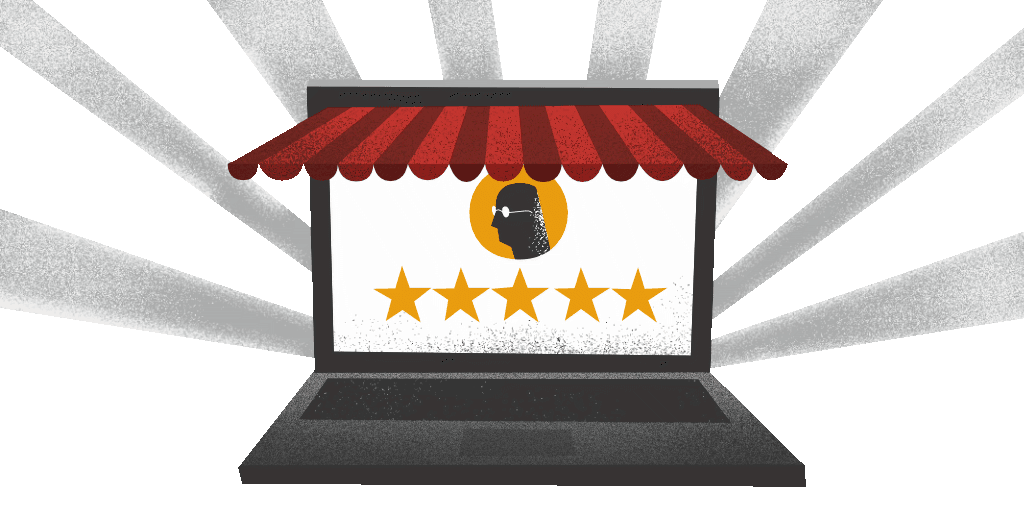
Optimizing your listing
Here are some of the most important things you need to know to optimize your Amazon listing.
Product title
You get up to 500 characters to title your product on Amazon. A longer and more detailed product title is better for SEO. Focus more on search terms and keywords and less on having a compelling, attention-grabbing title because titles that are long and keyword-rich perform best.
Product page content
Use the bullet point section in the product description because detailed information about features and benefits will increase conversion rates as well as search matches for target keywords, and bulleted lists are easy to scan quickly.
You can add a more detailed description further down on the page, but the area that customers first see should contain specific details and selling points about the item in a bullet-pointed list. Make sure you use the character count allotment completely and avoid duplicate content.
Categories
Be sure to choose the most accurate and narrowly defined product category possible to better reach your target customer. A well-defined category is also likely to give you a higher “best sellers rank” for your given category.
Product reviews
Customer reviews are one of the most essential ways to optimize your listing. Encourage your buyers to leave product reviews and address negative feedback immediately. Well-worded and timely feedback requests can massively increase the amount and quality of your reviews.
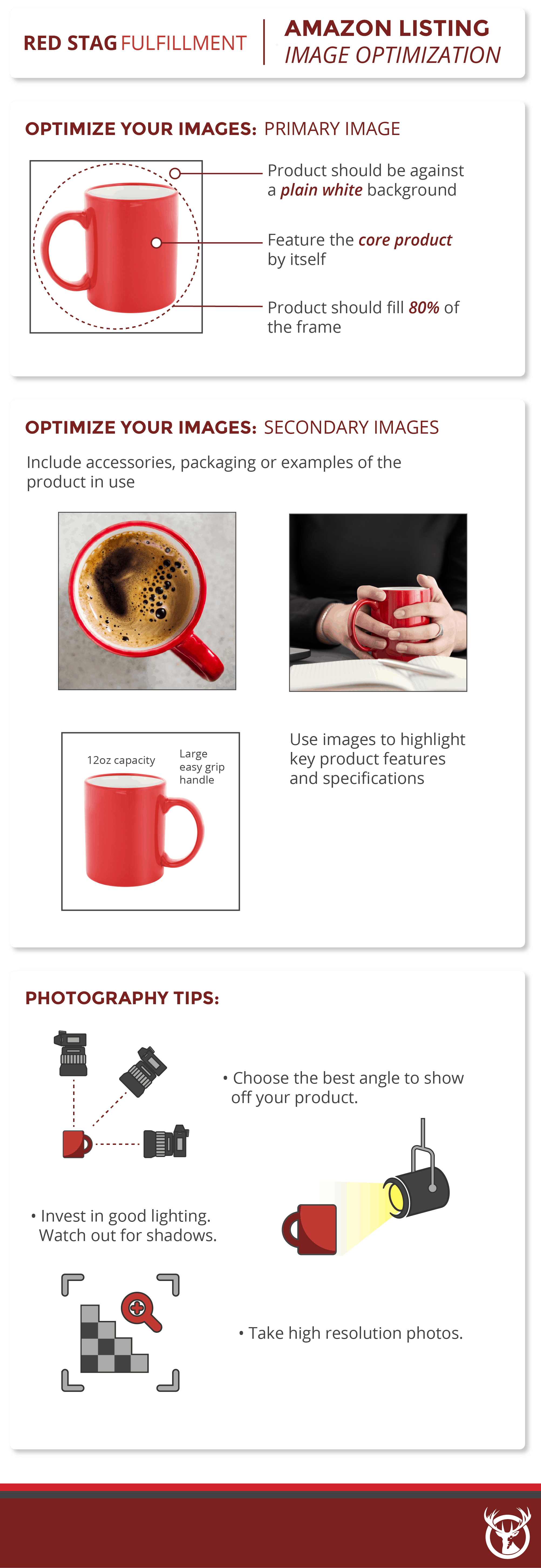
Delivering Amazon orders
There are three basic options for shipping Amazon orders:
- Self-fulfillment: You hold stock and pack and ship orders in-house.
- FBA: Amazon warehouses your merchandise and ships orders for you.
- Third-party logistics: You work with a 3PL to ship to customers who order on Amazon.
Amazon sellers have excellent choices for order fulfillment: seller fulfillment, Fulfillment by Amazon, or fulfillment by merchant (FBM) through an independent 3PL. There are pros and cons for each.
Fulfillment by merchant (FBM)
Another option is to handle your own order fulfillment. If you choose FBM, you’re responsible for maintaining inventory and packing, labeling, and shipping your items to your customers. Self-fulfillment can be a low-cost option for small businesses and people selling as a side hustle, but if your business grows (or you’re serious about making it grow), some form of third-party fulfillment is your best option.
Fulfillment by Amazon
Based on the experience of sellers, there are significant benefits but also major downsides to using Amazon FBA as your 3PL.
Pros of using Amazon FBA:
- You benefit from Amazon’s extensive logistics network — there’s an Amazon fulfillment center (or more than one) near every major population center in the U.S.
- Your items are eligible for Prime shipping, making them more appealing to Prime members
- Amazon customer service is excellent, and it handles returns swiftly
Cons of Amazon FBA:
- You’re at the mercy of Amazon’s warehousing policies, which can disadvantage smaller sellers
- Amazon restricts warehouse space during the peak holiday season, limiting the amount you can sell
- FBA won’t handle oversized or heavy items
- If your inventory doesn’t move quickly enough, you could get kicked out of FBA on short notice
- Products ship in Amazon boxes
- FBA fees, including unexpected costs, can add up and eat into your profit margin
- FBA charges higher storage fees during the holiday peak selling season
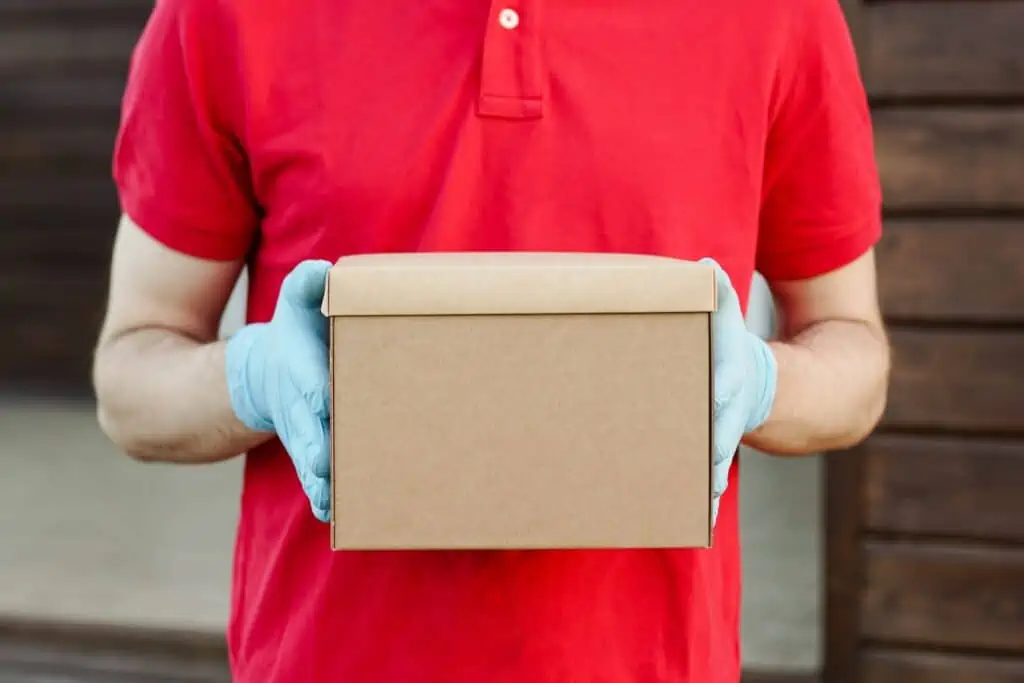
Work with a 3PL
Choosing your own 3PL to pick and pack Amazon orders is an excellent choice for many online businesses. You maintain more control over the fulfillment process, and you can partner with a 3PL that meets the particular needs of your business.
Pros of using an independent fulfillment partner:
- You can choose a 3PL with expertise in shipping products like yours, including bulky and heavy items
- You’re able to ship in branded packaging
- You get more control over your fulfillment process, including timing, costs, and inventory management
- With the right fulfillment partner, you can offer customers the same fast and accurate fulfillment as Amazon does
Cons of using a 3PL for Amazon fulfillment:
- You deal with two vendors rather than one
- You have to set up an independent returns process
- It’s harder to qualify to offer Prime shipping
Tips for a successful Amazon store
Keeping your customers happy is a crucial part of running a successful eCommerce business. Here are several small things you can do to increase customer satisfaction and avoid issues that might lead to negative reviews in your Amazon store.
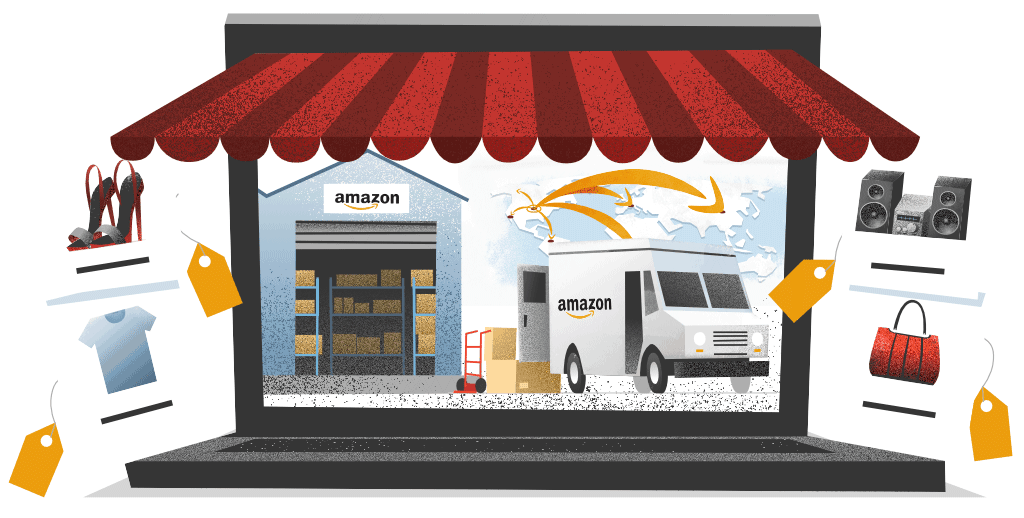
Check for new orders daily
If you choose seller fulfillment, promptly fill all new orders by checking for them daily. You will receive an order notification when a sale is made, but it’s a good idea to check manually, just in case. Orders and customer communications can be viewed in the Seller Central portal.
If you work with a 3PL, make sure your fulfillment center is getting your Amazon orders electronically. Perform spot checks occasionally to make sure there are no communication glitches between the marketplace and the warehouse.
Send shipping confirmations
Always communicate with your customer once an order has shipped to confirm the shipment. To do this, go to the “Orders” tab and select the “Confirm Shipment” button for the associated order.
Check your inventory regularly
Check your inventory levels regularly and replenish your stock early to avoid running out. Track your inventory to determine optimal stock levels. Factor seasonal differences into your selling plan and stay on top of your inventory management.
Keep your pricing information up to date
Since customers are more likely to choose lower-priced merchandise, it’s important to keep your pricing up to date and competitive. If you’re having a sale or can lower your prices, be sure to update your listing to reflect the new pricing.
Repricing tools dynamically price your items so you maintain a competitive edge. Dynamic repricing can increase search visibility.
Respond to customers promptly
Good customer service is imperative to running a successful business and promoting your brand name. Whether you’re doing this yourself, through Amazon, or through a third-party service, ensure that customer inquiries are being answered and their problems solved in a timely manner. Amazon heavily weighs prompt response time when considering the status of a seller’s account.
Build a 5-star feedback rating
Cultivating a strong seller feedback process is one of the best ways to grow your customer base. A 5-star rating will foster more trust in your brand and get you better placement in Amazon search results.
Be sure you describe items accurately, ship them promptly, and provide great customer service. If you do all these things well, ask for reviews via an email after shipping or a paper request included in the package itself.
Aim to keep returns below 8%
Minimize returns by ensuring your merchandise is accurately described on the detail pages, arrives in excellent condition, and is sized correctly. For example, if you’re shipping clothes, make sure the size chart is accurate to avoid excessive returns. If your returns rise above 8%, Amazon will shut down the listing.
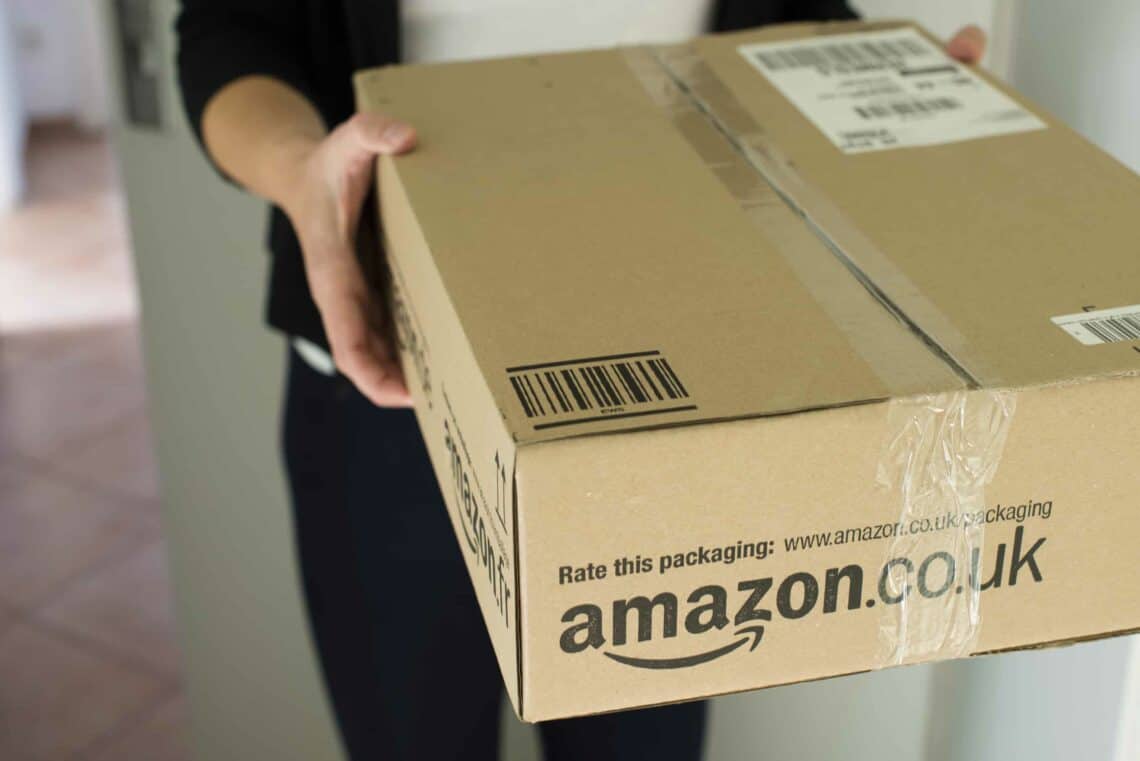
Amazon seller FAQs
How do beginners make money selling on Amazon?
Beginners can make money selling on Amazon by offering unique products or lower prices. Follow the tips in this article to make your product listings more visible.
Is selling on Amazon free?
No. Amazon takes a percentage of each sale as its commission. In addition, you may incur fees if you use FBA or run Amazon ads.
Is it still worth it to sell on Amazon?
Amazon is still the largest eCommerce marketplace, and many sellers find the Amazon Marketplace worthwhile. However, there are also issues with Amazon, including competition from knock-off products and difficulty getting reinstated if Amazon bans your business. The best way to find out if Amazon selling is worth it for your business is to research similar products and educate yourself about the Amazon Marketplace and other online selling options.
What is the most profitable way to sell on Amazon?
The most profitable way for a small business to sell on Amazon is by marketing private label products under your brand name. Selling custom merchandise can also be profitable, but that’s a harder lift for beginners.
Dropshipping and Amazon arbitrage have lower profit margins but can be excellent ways for new sellers to get started in Amazon selling with minimal capital.
What are some of the benefits of selling on Amazon?
When you sell on Amazon, you get the benefit of a platform that reaches a large number of consumers. There are 200 million Prime members globally, and 61% of product searches originate on Amazon.
What is Amazon’s commission rate?
Amazon’s commission varies based on the product category and ranges from 8% to 15%. You’ll also pay $0.99 per sale on the Individual plan and $39.99 per month on the Professional plan.
Your best partner for selling on Amazon
Red Stag Fulfillment provides fast, accurate, reliable order fulfillment that meets Amazon’s high standards. We shipped over 3 million orders last year, many of them placed on Amazon.
If a 3PL is the right choice for your Amazon business, Red Stag Fulfillment might just be your logistics success partner.
More about selling on Amazon:
- Is Amazon FBA Right for Your Business?
- Pros and Cons of Selling Through Amazon
- Is It Good to Sell on Amazon?
*Nothing in this article is meant to imply a legal relationship between Red Stag Fulfillment, LLC and Amazon or any named company. Red Stag Fulfillment, LLC does not own any outside trademarks referenced or included in this article.







